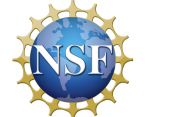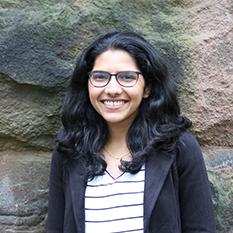Priyadarshini Panda and Yu He Win NSF CAREER Awards

For projects that aim to advance the fields of computing and new materials, professors Priyadarshini Panda and Yu He have won 2023 Faculty Early Career Development (CAREER) Awards from the National Science Foundation (NSF).
The NSF CAREER award - which comes with a substantial five-year grant - is a prestigious honor for young faculty members and supports the early career activities of teachers and scholars who are most likely to become the academic leaders of the future.
Spiking neural networks
 Panda, assistant professor of electrical engineering, will use the grant to advance computing with the use of spiking neural networks (SNNs). Closely mimicking the human brain, SNNs differ from most artificial neural networks in that they only generate a signal - that is, “spike” - when they receive certain input signals. This means that they require less power than neural networks that are always on.
Panda, assistant professor of electrical engineering, will use the grant to advance computing with the use of spiking neural networks (SNNs). Closely mimicking the human brain, SNNs differ from most artificial neural networks in that they only generate a signal - that is, “spike” - when they receive certain input signals. This means that they require less power than neural networks that are always on.
In the past decade, SNNs have emerged as a low-power alternative to AI. SNN’s main attraction lies in the fact that they offer low-power architectural implementations. And unlike traditional neural networks, SNNs process information over time. That means the earlier and later layers of the networks can “talk” to each other and create a feedback loop. This temporal processing enables SNNs to manifest interesting features, such as robustness to adversarial scenarios as well as hardware variations.
With this project, Panda aims to help enable the next generation of robust and energy-efficient SNNs for distributed edge intelligence. Potential applications include tasks that involve voice and facial recognition, as well as various vision-related applications.
Currently, the use of SNNs is limited mostly to academic settings, but Panda hopes to change that.
“I want to demonstrate that SNNs can work on their own, and in tandem with other models,” she said. “At the end of the five years, we want to see that a roadmap has been established showing that SNNs can be full-scale systems that can be commercialized, and to actually see this model on an edge device.”
Macroscopic quantum states
 Among the biggest triumphs of quantum mechanics was the discovery of macroscopic quantum states - billions of electrons that spontaneously fall into the same quantum state without needing any central coordination.
Among the biggest triumphs of quantum mechanics was the discovery of macroscopic quantum states - billions of electrons that spontaneously fall into the same quantum state without needing any central coordination.
With this project, Yu He, assistant professor of applied physics and of physics, wants to develop a better understanding of how these states evolve.
Macroscopic quantum states are used in cutting-edge technologies such as lasers, superconducting qubits, and frictionless liquids. One of the most prominent examples of a macroscopic coherent state is superconductivity, in which many electron pairs coherently move through the material without resistance, hence generating no heat loss. This differs from traditional semiconductors, where electrons act individually, which allows for noise and fluctuation and limits functionality.
“The electrons in superconductors all share the same goal - they move in a highly coordinated way,” said Yu He. “Even if there is a small perversion here and there, it doesn't quite distort or destroy the overall motion because all the electrons in this case hold hands together, so it's very hard to cause a disruption.”
There are two ways to realize macroscopic coherent states: two electrons first tightly bind into a molecule, then develop coherence with other molecules; or many electrons develop pairing and coherence all at once. These two routes are known as the “BCS limit” and the “BEC limit,” the discovery of which were recognized with Nobel prizes in Physics in 1972 and 2001. The major distinction between the two limits is the behavior of the quantum mechanical “phase” of the wavefunction. To date, most investigations of systems crossing over between the two limits are only realized in ultracold atomic gas manipulated with delicate laser traps.
He aims to develop and investigate tunable solid state materials straddled between these two limits, exploring novel states of matter and their electronic structures during this crossover using advanced synthesis and high-resolution photoelectron spectroscopy.
“We want to understand how the crossover happens directly viewed from the eyes of individual electrons,” he said. “We want to have a very clear understanding of how one can control the wavefunction’s phase to regulate these quantum coherent states, which is a quantity that only exists in the quantum mechanic world.”

